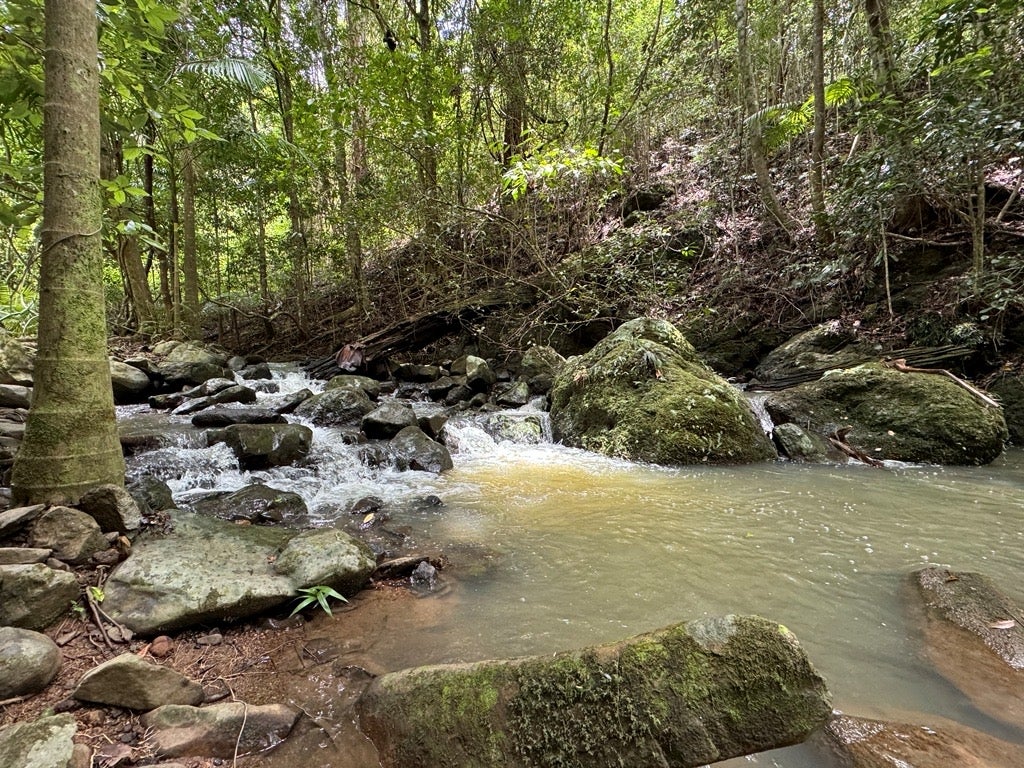New Australian research using satellite imagery to monitor the location of emperor penguin colonies in East Antarctica, shows the birds are struggling to adapt to rapid changes in their environment.
Australian Antarctic Division seabird researcher, Dr Barbara Wienecke, said that for nearly one million years emperor penguins have responded to changes in their favoured breeding habitat, the Antarctic fast-ice* zone, moving to new locations if their chosen area becomes unsuitable.
But recent untimely loss of their fast-ice habitat and record low sea-ice extent in 2022 and 2023, has led to breeding failure in some colonies.
Scientists fear these recent events may herald rapidly worsening ice conditions, to which the penguins have limited capacity and time to adapt.
Photo: Sophie Counsell
“Emperor penguins need stable fast-ice for about 10 months a year, to breed successfully and rear their chicks,” Dr Wienecke said.
“If their breeding platform disintegrates before early December, when the chicks still have their downy plumage, it’s likely they will all perish. If it disintegrates before the end of December, chicks without waterproof plumage will die.”
As long-lived seabirds, Dr Wienecke said emperor penguins can cope with disruptive events, provided they do not occur frequently.
“While they can move to new breeding areas, they have limited potential to adapt to accelerating environmental change and a shorter fast-ice season, as they cannot shorten the time chicks need to grow and develop,” she said.
Dr Wienecke, sea-ice scientist Dr Jan Lieser, and seabird experts Dr Julie McInnes and Jonathon Barrington, used the European Space Agency’s (ESA) Sentinel-2 satellite imagery to look at changes in breeding habitat and ice conditions between 2018 and 2023.
“Satellite imagery is a very useful way to determine the local and regional variability in fast-ice habitat,” Dr Lieser said.
“From this we can assess the adaptability of emperor penguins to rapid change, and the impacts of habitat change on breeding success.”
The team examined satellite images covering 6000 km of the East Antarctic coastline between September and December each year – the time for chick rearing and fledging.
The team manually recorded colony locations each year and the distances between colonies and the nearest fast-ice edge.
Adults need to be close enough to the fast-ice edge to access open water for feeding. But being too close endangers breeding success if the ice breaks up before the chicks are able to survive at sea.
“Thirteen of the 27 colonies we studied across East Antarctica are at risk of reduced or complete breeding failure, due to habitat loss, and nine of these 13 colonies experienced reduced or complete breeding failure at least once during the six years of the study,” Dr Wienecke said.
One colony disappeared altogether, but individuals may have joined other colonies in the region. Some colonies moved to new kinds of habitat, including ice shelves and ice tongues, but these areas can be negatively affected by iceberg calving events that alter local conditions.
Previous population modelling studies project that 65% of emperor penguin colonies may become ‘quasi-extinct’ (doomed to extinction) by 2050. However, Dr Wienecke said the incredible variability in colony locations, relative to the sea ice, made it difficult to model population trends.
She said the new study shows medium and high-resolution satellite imagery is a useful tool for annual monitoring of emperor penguin colonies and fast-ice habitat, Antarctica-wide, alongside ground-based and aerial counts.
“Ongoing Antarctica-wide monitoring is essential to quantify the impact of changing fast-ice conditions on emperor penguins and the cumulative impacts of other threats such as disease,” Dr Wienecke said.
“Satellite imagery enables us to identify the locations of emperor penguin colonies each year, and assess the local environmental conditions, which is critical to understanding the consequences for individual colonies.
“This image analysis needs to be done in combination with ground and aerial counts of penguins within the colonies, where possible, to assess changes to local populations.”
The research is published in .
*Fast ice is sea ice that is attached to the Antarctic coastline, shoals, or grounded icebergs. It acts like a discontinuous belt around the Antarctic coast and can remain in place for multiple years. It provides habitat and breeding grounds for emperor penguins and Weddell seals. It contrasts with ‘pack ice’, which is not attached to land. Pack ice drifts with winds and currents and is constantly changing.







